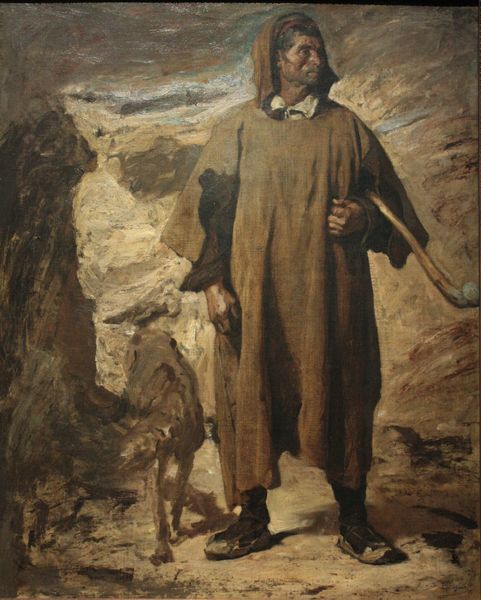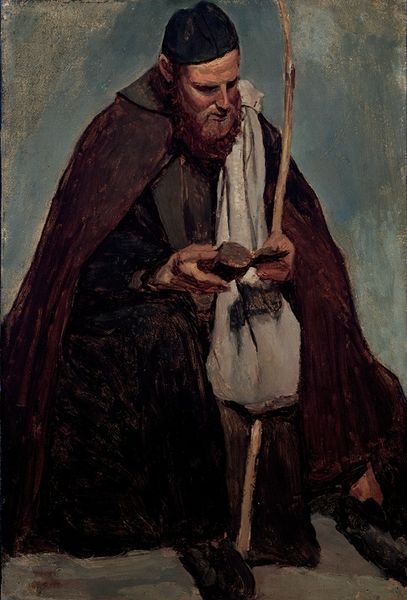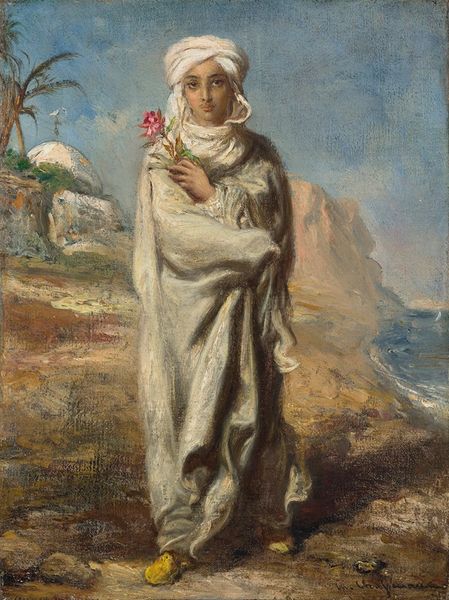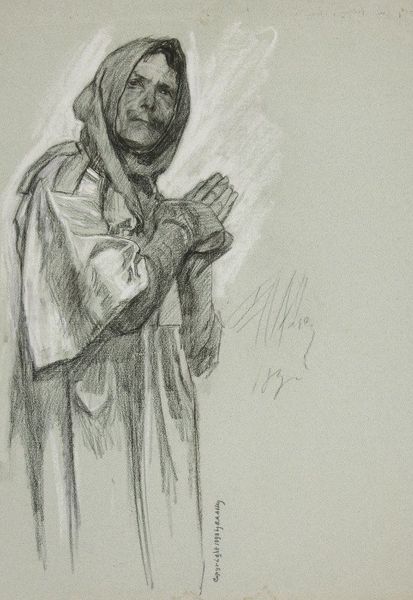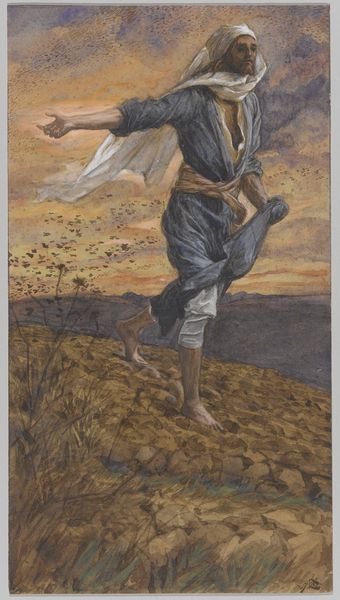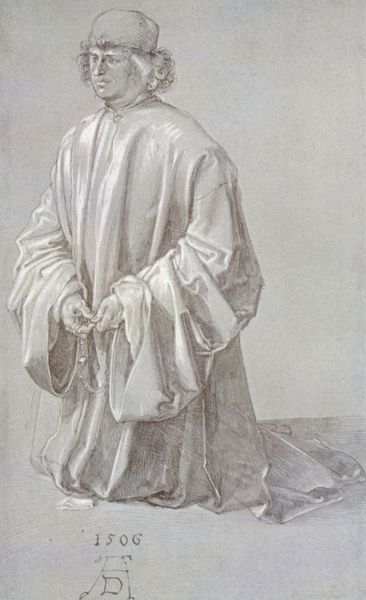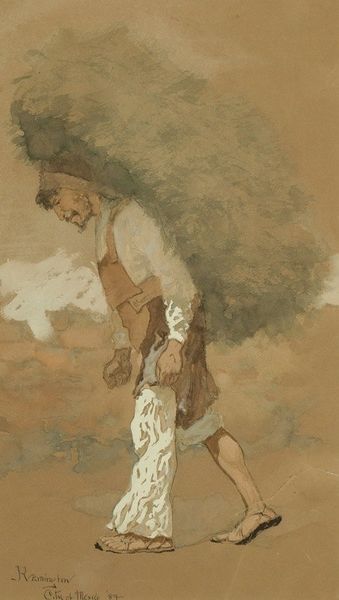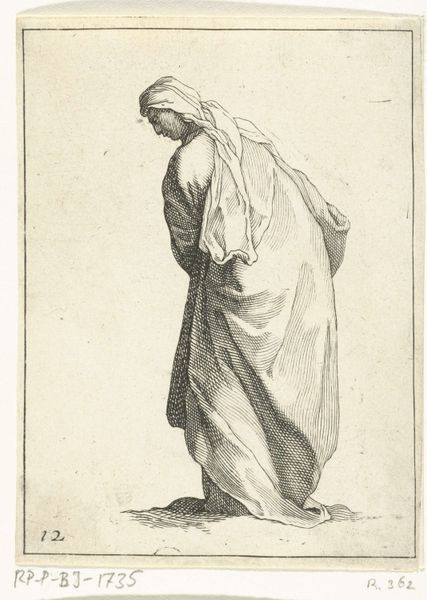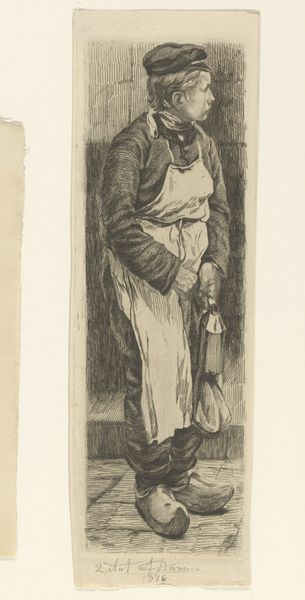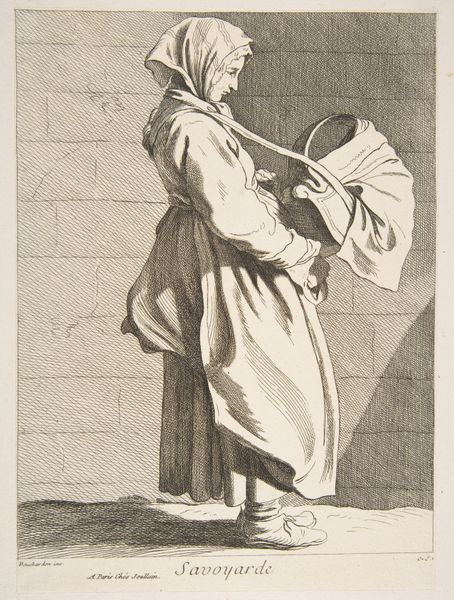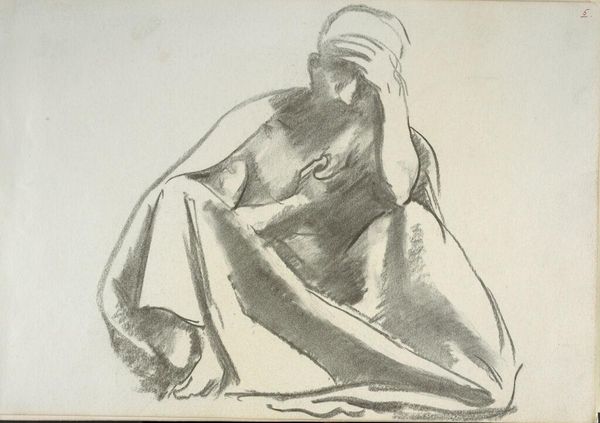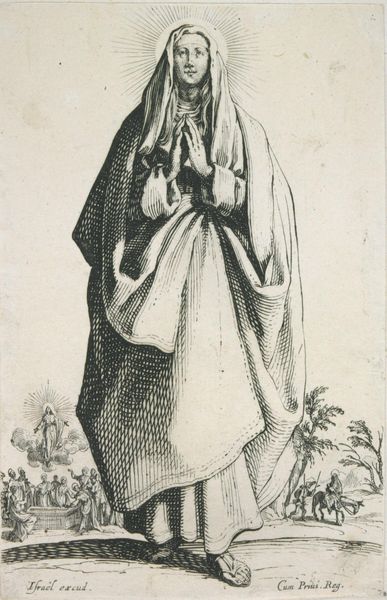
painting, watercolor
#
portrait
#
figurative
#
painting
#
impressionism
#
landscape
#
oil painting
#
watercolor
#
orientalism
#
genre-painting
#
portrait art
Copyright: Public Domain: Artvee
Curator: This watercolor artwork is titled "Man and boy in Algiers." It's attributed to Anders Zorn, painted in what appears to be 1887. Editor: The first thing that strikes me is the light—the luminosity of the whites against the man's darker skin, and that intensely azure sky. There's a sense of heat, almost tactile. Curator: Yes, the manipulation of watercolor is truly striking. Consider the subtle layering—the way the artist achieves transparency in the robes, contrasting against the solid blocks of color. It suggests both light and form through purely optical means. Editor: Beyond the formal technique, I'm interested in the social dynamic suggested here. The composition places the man, regal and smoking, as the focal point, elevated over the younger boy. It speaks to hierarchies, perhaps of age and status, prevalent within that historical context of colonial Algiers. Curator: A pertinent observation. While your analysis focuses on colonial readings, it is possible to examine the structure purely as a balance between vertical and horizontal forms—the upright figure balanced against the long line of the wall and the distant sea. Note how Zorn directs our eyes, playing with spatial relationships. Editor: But can we truly detach form from its historical origins? The art market, the social gaze, even Zorn's own Swedish identity as an outsider encountering this "exotic" locale inevitably shaped what he chose to depict and how. The very act of observation and representation is an exercise of power. Curator: Nevertheless, appreciate Zorn's masterly rendering of reflected light. Notice that there are hardly any purely white parts in this artwork. Editor: Agreed, the artist demonstrates skill. Overall, I get a feeling of serene stillness mingled with tension, a quiet tableau pregnant with unseen social currents. Curator: I come away with a fresh respect for Zorn's masterful ability to extract luminosity from what appear to be simply flat expanses of graded pigments. Editor: Ultimately, considering its place and period helps unlock richer implications and questions surrounding the power of the artist's hand and our responsibility in viewing the finished product.
Comments
No comments
Be the first to comment and join the conversation on the ultimate creative platform.
